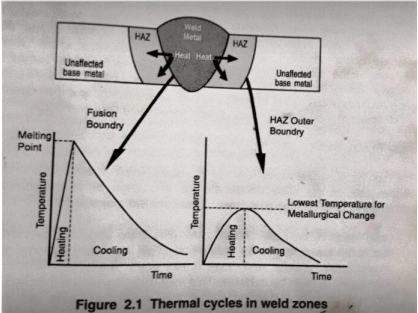Abstract
The stainless steels have been the primary alloys used for building and construction, Chemical industry, Oil & Gas and industrial applications. Most commonly used alloys types are 308, 316 and their low carbon versions types 308L and 316L. They have good fabricability, resistance to atmospheric corrosion and resistance to many organic and inorganic compounds. Austenitic stainless steels are commonly welded with 100%Ar in TIG process. At the end, weld metal contains some amount of ferrite to reduce the hot cracking. In shielding gas 2%N2 addition will be effect the ferrite formation and it concerns have emerged about possible effects on the mechanical properties of the weld metal. ER308L and ER316L austenitic stainless steels filler wire were used in this work and welded by Tungsten inert gas welding process. The properties of undiluted weld metal are evaluated with addition of nitrogen in shielding gas. This paper reports on tensile strength, impact toughness properties (at -196°C and -101°C), ferrite number, lateral expansion and microstructure of ER308L and ER316L weld deposited using 100%Ar and 98%Ar+2%N2 shielding gases. The undiluted weld metal microstructure was examined before and after nitrogen addition in shielding gases under optical microscope. The reduction of ferrite content by nitrogen was analyzed with WRC and Feritscope. The effect of 2%N2 addition in shielding gas was discussed.
Keywords: TIG welding, Austenitic stainless steel, Shielding gases, Microstructure, Tensile properties
Austenitic stainless steel is widely used among stainless steel group because of the properties of easily weldable and formable. They are most easily recognized as nonmagnetic. A literature survey indicates austenitic stainless steel used as heavy structures in ship building, pressure vessels and heavy vehicles, in order to meet the requirement of good impact properties and adequate strength [1]. Austenitic stainless steel had less than 0.15% carbon, 16 to 28% chromium, 9 to 30 % nickel & 3 % Molybdenum. Chromium reacts with the atmosphere oxygen and form passive layer of chromium oxide. It prevents the further oxidation and nickel is enhancing the property of the toughness at cryogenic temperature. It can be divided rather loosely into three groups: common chromium-nickel (300 series), manganese-chromium-nickel-nitrogen (200 series) and specialty alloys. The most widely used austenite steel electrode is the E308L, E316L also known as 18/9, 18/12/3 for its composition of 18% chromium, 9% nickel and 18% chromium, 12% nickel & 3% Molybdenum. Austenitic stainless steel weldments are solidified as austenite as matrix and small amount of ferrite [2],[3]. This ferrite was act as barrier to hot cracks, small fissures during solidification of weld zone. [4]. Cooling rate of the weld metal have some influence on the ferrite formation, but chemical composition have more influence on changing ferrite level in weldment compared to heat input [5]. Nickel, manganese, copper carbon and Nitrogen are austenite stabilizers. Comparatively nitrogen is one of the most influencing elements of ferrite formation.
Table 2.1 Composition of ER308L and ER 316L filler wire
| Grade | %C | %Cr | %Ni | %Mo | %Mn | %Si | %P | %S | %Cu | %N |
| ER308L | 0.025 | 20.23 | 9.45 | 0.017 | 1.62 | 0.45 | 0.029 | 0.011 | 0.146 | 0.06 |
| ER316L | 0.019 | 18.40 | 11.22 | 2.29 | 1.63 | 0.41 | 0.028 | 0.007 | 0.424 | 0.05 |
Table 2.2 Composition of weld metal with 100%Ar shielding gas
| Grade | %C | %Cr | %Ni | %Mo | %Mn | %Si | %P | %S | %Cu | %Nb | %N |
| ER308L | 0.016 | 20.48 | 9.24 | 0.03 | 1.39 | 0.37 | 0.02 | 0.006 | 0.10 | 0.04 | 0.08 |
| ER316L | 0.022 | 18.35 | 10.89 | 2.23 | 1.48 | 0.31 | 0.02 | 0.003 | 0.10 | 0.01 | 0.06 |
Table 2.3 Composition of weld metal with 98%Ar+2%N2 shielding gas
| Grade | %C | %Cr | %Ni | %Mo | %Mn | %Si | %P | %S | %Cu | %Nb | %N |
| ER308L | 0.015 | 19.28 | 9.29 | 0.045 | 1.45 | 0.37 | 0.02 | 0.007 | 0.11 | 0.035 | 0.33 |
| ER316L | 0.019 | 17.09 | 11.04 | 2.28 | 1.43 | 0.26 | 0.02 | 0.002 | 0.10 | 0.004 | 0.36 |
Table 2.4 Welding parameters
| Shielding gas | Grade | Current(A) | Voltage(V) | Average speed (mm/min) | Average Heat Input (KJ/mm) | Gas flow (lit/min) |
| 100%Ar | ER308L | 245-246 | 14.5-15.6 | 108 | 2.1 | 10-15 |
| ER316L | 244-245 | 16.8-17.3 | 110 | 2.3 | 10-15 |
| 98%Ar+2%N2 | ER308L | 243-244 | 14.6-16.3 | 105 | 2.2 | 10-15 |
| ER316L | 234-237 | 15.8-17.2 | 114 | 2.1 | 10-15 |
ER308L and ER316L TIG filler rods were selected with two different shielding gases.
1.100%Ar
2.98%Ar + 2%N2
Table 2.5 Base material chemical composition (IS 2062)
| %C | %Mn | %S | %P | %Si |
| 0.13 | 0.93 | 0.015 | 0.021 | 0.38 |
GTAW is a Non consumable electrode process, so that the 308L and 316L filler materials are fed manually. 2.40mm filler wire is used for both Stainless steel welding. Welding parameters like root gap, Bevel angle, Interpass temperature, Back plate and Base plate dimensions are selected as per the ASME section II C – SFA 5.4. Because of Nitrogen addition in shielding gas 2% Thoriated Tungsten electrode was used to reduce the erosion of electrode. Commercially using shielding gas 100%Ar was welded with 2% Zirconated electrode.
The base material used in the present investigation was IS 2062 grade-b plates basically low carbon steel of sizes 350mm X 125mm X 15mm.

Fig 2.1 Line diagram weld assembly

Fig 2.2 Assembly after welding
Backing plate of size 370mm X 30mm X 6.5mm. We have added buttering layer of 3mm of ER308L for 2 assemblies and ER 316L for 2 assemblies. By adding layer of buttering of weld metal on the base plate, dilution of base material into weld material was eliminated. Buttering layer model diagram is given in Fig 2.1. Plates are welded in flat (1G) position and DCEN polarity was used.
- Results and Discussion
3.1 Tensile strength of weld metals
Table 3.1 Tensile strength of ER308L weld metal
| S.No | Properties | Weld metal with 100%Ar shielding gas | Weld metal with 98%Ar+2%N2 shielding gas |
| 1 | Tensile strength (MPa) | 670 | 684 |
| 2 | Yield strength (MPa) | 505.6 | 550 |
| 3 | %Elongation (50mm gaugelength) | 39.26 | 43.60 |
The effect of shielding gases on mechanical properties is listed on table 3.1 & 3.2. it clearly shows a progressive increase on weldmetal ultimate tensile strength, yield strength & elongation after 2%N2 addition shielding gas. Added nitrogen content increase austentite phase on weld metal and it increase ductility and nitrogen atom sit interstitial positions of the weld matrix crystal lattice and it strengthen weld metal[9]. Because of the above solid solution strengthening UTS & Yield strength of weld increased after 2%N2 addition shielding gas.
Table 3.2 Tensile strength of ER316L weld metal
| S.No | Properties | Weld metal with 100%Ar shielding gas | Weld metal with 98%Ar+2%N2 shielding gas |
| 1 | Tensile strength (MPa) | 602.5 | 663 |
| 2 | Yield strength (MPa) | 475 | 565 |
| 3 | %Elongation (50mm gauge length) | 38.32 | 45.83 |
3.2 Impact strength of weld metals
Table 3.3 Impact strength of ER308L weld metal with 100%Ar
| S.No | Impact energy at -101°C (Joules) | Lateral expansion at -101°C (mm) | Impact energy at -196°C (Joules) | Lateral expansion at -196°C (mm) |
| 1 | 92 | 1.40 | 42 | 0.62 |
| 2 | 94 | 1.36 | 42 | 0.59 |
| 3 | 88 | 1.09 | 46 | 0.61 |
| 4 | 78 | 1.14 | 52 | 0.63 |
| 5 | 88 | 1.04 | 42 | 0.56 |
Table 3.4 Impact strength of ER316L weld metal with 100%Ar
| S.No | Impact energy at -101°C (Joules) | Lateral expansion at -101°C | Impact energy at -196°C (Joules) | Lateral expansion at -196°C |
| 1 | 138 | 1.81 | 86 | 1.21 |
| 2 | 154 | 2.02 | 82 | 1.16 |
| 3 | 146 | 1.91 | 104 | 1.51 |
| 4 | 146 | 1.99 | 76 | 1.15 |
| 5 | 146 | 1.92 | 74 | 1.06 |
Nitrogen addition promotes the austenite phase & reduces the ferrite content in the weld metal of austenitic stainless steel. This again promotes impact toughness[8]. Impact test results are listed on table 3.3 to 3.6.Lateral expansion is also increased when welded with 2% Nitrogen addition. Lateral expansion is directly proportional to elongation.
Table 3.5 Impact strength of ER308L weld metal with 98%Ar+2%N2
| S.No | Impact energy at -101°C (Joules) | Lateral expansion at -101°C | Impact energy at -196°C (Joules) | Lateral expansion at -196°C |
| 1 | 90 | 1.55 | 50 | 1.14 |
| 2 | 120 | 1.97 | 46 | 0.90 |
| 3 | 96 | 1.58 | 50 | 1.10 |
| 4 | 102 | 1.57 | 46 | 1.10 |
| 5 | 122 | 2.05 | 50 | 1.22 |
Table 3.6 Impact strength of ER316L weld metal with 98%Ar+2%N2
| S.No | Impact energy at -101°C (Joules) | Lateral expansion at -101°C | Impact energy at -196°C (Joules) | Lateral expansion at -196°C |
| 1 | 134 | 1.75 | 82 | 1.01 |
| 2 | 160 | 2.06 | 84 | 1.04 |
| 3 | 158 | 1.85 | 102 | 1.50 |
| 4 | 162 | 1.98 | 94 | 1.40 |
| 5 | 149 | 1.82 | 86 | 1.08 |
3.3 Hardness values of weld metals
Hardness values are slightly increased after 2%N2 addition in shielding gas. Because of the sold solution strengthening Hardness on the weld metal was increased.
Table 3.7 Hardness of weld metals with different shielding gas
| Grade | Hardness with 100%Ar | Hardness with 98%Ar+2%N2 |
| ER308L | 94,92,92 HRB | 95,96,95 HRB |
| ER316L | 87,88,87 HRB | 88,89,89 HRB |
3.4 Ferrite number analysis
Nitrogen content of weld metal was identified in both shielding gas weld metal with chromatography analysis. It results high nitrogen content in 98%Ar+2%N2 weld metal than the 100%Ar weld metal. Nitrogen content of wire also measured.
Table 3.8 Nitrogen values comparison
| Grade | Wire | 100%Ar | 98%Ar+2%N2 |
| ER308L | 0.06 | 0.08 | 0.33 |
| ER316L | 0.05 | 0.06 | 0.36 |
Table 3.9 Ferrite number
| Shielding gas | Filler wire | WRC (FN) | Ferritscope (FN) |
| 100%Ar | ER308L | 13 | 4.5 |
| ER316L | 8 | 3.5 |
| 98%Ar+2%N2 | ER308L | 0 | 0.1 |
| ER316L | 0 | 0.16 |
3.5 Microstructure analysis
ER308L weld microstructure with 100%Ar showing Austenite & vermicular Ferrite phases, which the ferrite number of weld metal is about 4.5 FN. It is well known that a small amount of ferrite in austenitic stainless steel weld metal is very effective for the prevention of hot cracking. Austenite is the bright phase and Ferrite is the Dark phase in microstructure color morphology. Ferrite morphology varies depending on the solidification mode.










Comments
No comments available.